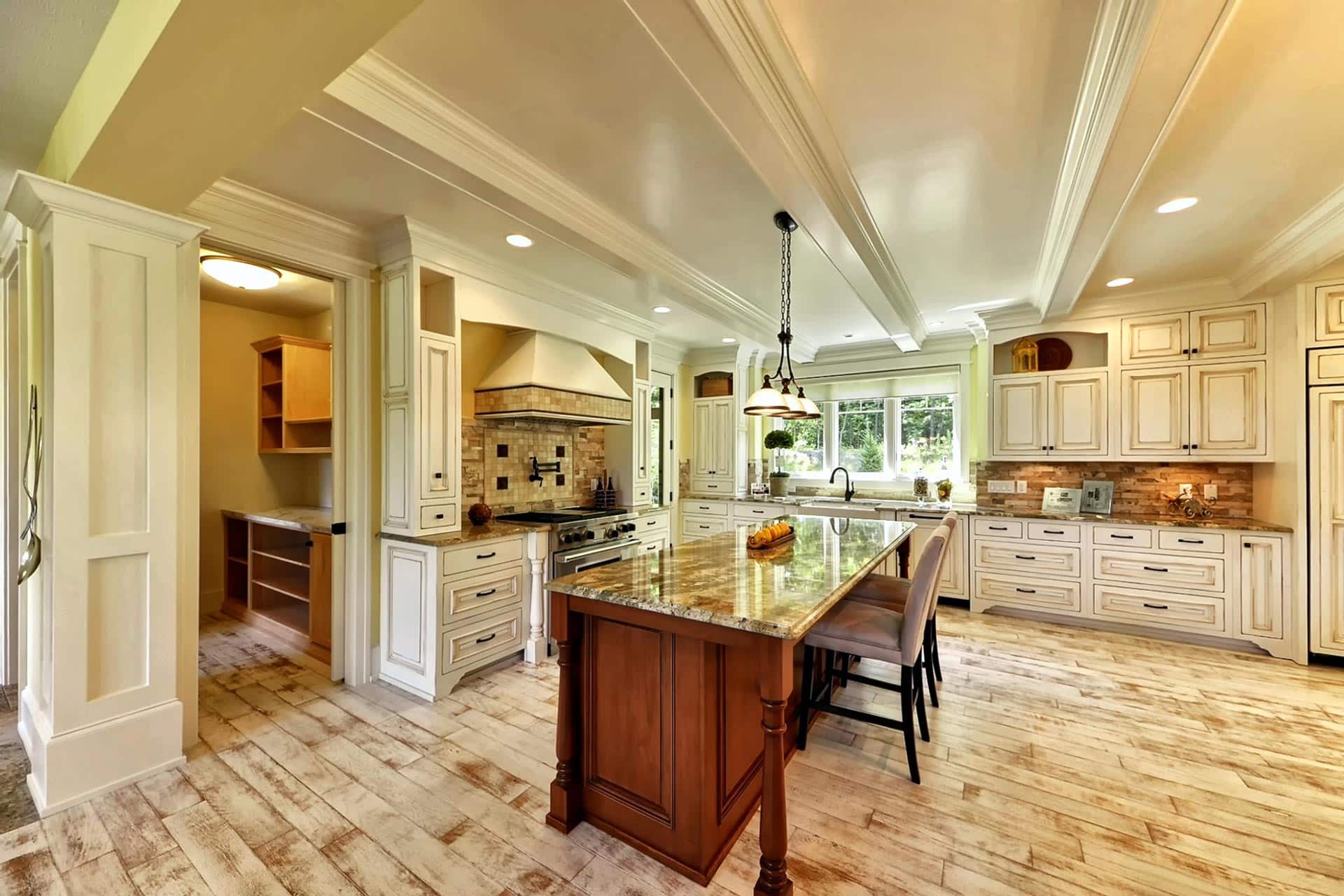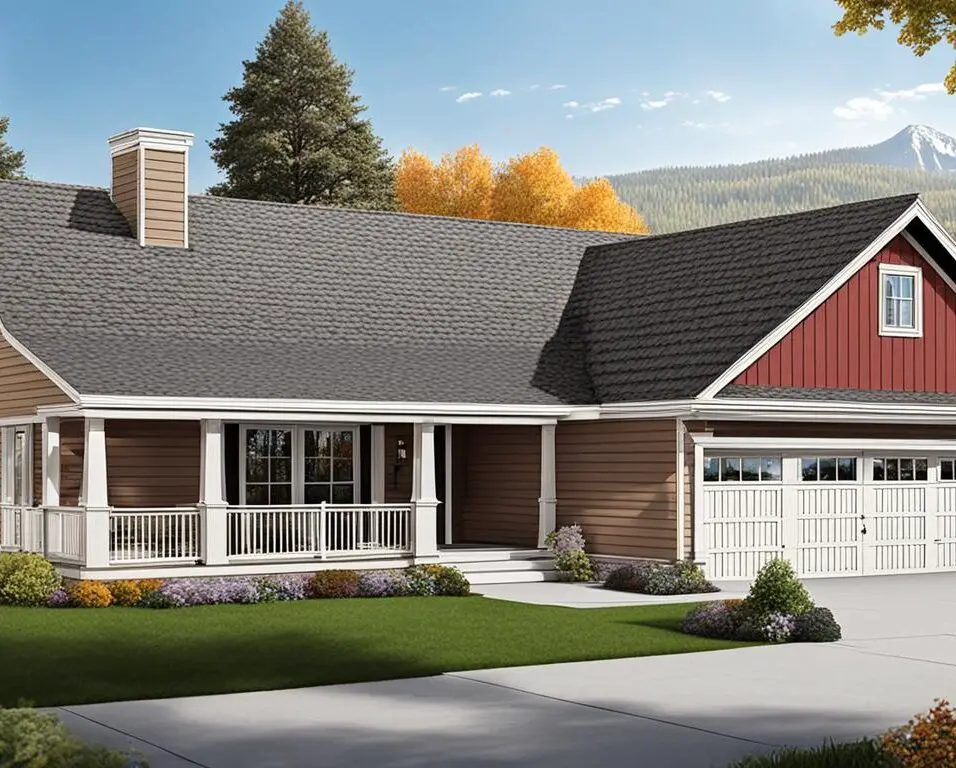How To Become A Home Remodeler
Introduction
How To Become A Home Remodeler: Have you ever walked into a room and envisioned its potential for transformation? Do you have a passion for design, construction, and turning houses into dream homes? If so, the world of home remodeling may be your calling. “How To Become A Home Remodeler” is your comprehensive guide to embarking on a rewarding and creative career that allows you to breathe new life into homes and spaces.
Home remodeling is more than just construction; it’s an art form that combines craftsmanship, creativity, and innovation. It’s about taking a vision and turning it into a reality, whether it’s a kitchen cabinet renovation that enhances functionality, a bathroom remodel that adds luxury, or a whole-house makeover that revitalizes an entire living space.
This guide will walk you through the essential steps to become a skilled home remodeler. From acquiring the necessary education and hands-on experience to building a portfolio that showcases your expertise, we’ll provide you with a roadmap to success. You’ll also learn about the legal and regulatory aspects of the industry, including licensing and permits, ensuring that your projects are not only beautiful but also safe and compliant with local building codes.
Whether you aspire to work as an independent remodeler, join a reputable remodeling company, or start your own business, this guide will equip you with the knowledge, skills, and strategies needed to thrive in this dynamic field. Homeowners are seeking professionals who can bring their renovation dreams to life, and as a home remodeler, you’ll have the opportunity to make those dreams a reality.

How stressful is a remodel?
Know this: It’s nothing to feel guilty about. As it turns out, stress, anxiety, and frustration are all very common feelings to experience when undergoing a home renovation project. A recent survey from Toolstation revealed that 60 percent of home renovations affect general well-being.
Home remodeling projects can be both exciting and stressful and the level of stress often depends on several factors:
Scope of the Project: The size and complexity of the remodel play a significant role in determining stress levels. A minor renovation, like updating a single room, may be less stressful than a whole-house remodel.
Budget: Managing the budget for a remodel can be a significant source of stress. Unexpected costs, changes in plans, and financial constraints can add pressure to the project.
Timeline: Meeting deadlines and dealing with project delays can be stressful, especially if you’re living in the home during the renovation.
Decision-Making: Remodels require numerous decisions, from design choices to materials selection. The more decisions involved, the more potential stress points.
Contractor and Crew: Working with reliable professionals can reduce stress, but dealing with unprofessional or unreliable contractors can escalate it.
Living Situation: If you’re residing in your home during the remodel, the disruption to your daily life can be stressful.
While remodeling can be challenging, careful planning, clear communication, and realistic expectations can help mitigate stress. Hiring experienced professionals and having a well-defined project plan can also make the process smoother.
What comes first in remodeling?
Practically speaking, you’ll want to do the kitchen remodel first because that work will create the most dust and debris, which you won’t want to land on new paint or finish jobs. It’s always a good idea to isolate any demolition mess by putting plastic over doorways or pass-throughs.
The sequence of tasks in a remodeling project can vary depending on the project’s scope and goals.
However, a general order of operations often includes:
Design and Planning: The project begins with design and planning. This phase involves creating a vision for the remodel, developing a budget, and obtaining any necessary permits.
Demolition: Demolition is typically one of the first physical steps in a remodel. This involves removing old fixtures, surfaces, and structures that need replacement.
Structural Changes: If the remodel involves structural alterations, such as removing walls or adding support beams, these changes are made next.
Plumbing and Electrical Work: Any plumbing or electrical work is typically done before adding new surfaces, such as drywall or flooring.
Insulation and Drywall: After the rough plumbing and electrical work is complete, insulation and drywall installation follow. This prepares the space for finishing.
Finish Work: Finish work includes installing flooring, cabinetry, countertops, fixtures, paint, and other aesthetic elements.
Final Inspections and Clean-Up: Once the remodeling work is complete, final inspections may be required to ensure everything meets building codes. After approval, a thorough clean-up is done.
The specific order may vary depending on the project, but it’s essential to plan and coordinate each step to ensure a smooth and efficient remodel.
What is the most difficult room to renovate?
Kitchens and Bathrooms Sell Homes
The kitchen is the hub of the home, a place for family dinners and weekend entertaining. The master bath might not see as much attention from visitors, but it’s a prime spot for rest and relaxation. Second, kitchens and baths are the most difficult rooms to renovate.
The difficulty of renovating a room can vary depending on factors like the scope of the project, the condition of the existing space, and the homeowner’s experience and skills. However, some rooms are commonly considered more challenging to renovate than others due to specific complexities and considerations. One such room is the kitchen.
Here are reasons why kitchen renovations can be among the most challenging:
Layout and Design: Kitchens often have complex layouts with multiple appliances, plumbing fixtures, and storage elements. Changing the layout significantly may require relocating plumbing and electrical systems, which can be complex and costly.
Cabinetry: Custom cabinetry or dealing with existing cabinets can be challenging. Achieving a seamless, professional look often requires precise measurements, leveling, and attention to detail.
Appliances: Installing and integrating new appliances, especially if they are larger or more advanced than the existing ones, can be complex. Proper electrical and plumbing connections are essential.
Plumbing and Electrical Work: Kitchens have numerous plumbing and electrical components. Ensuring these systems are up to code and work seamlessly is crucial for safety and functionality.
Countertops: Selection, measurement, and installation of countertops require precision. Materials like granite or quartz can be heavy and difficult to maneuver.
Flooring: Choosing and installing kitchen flooring is critical because it must withstand heavy foot traffic, moisture, and spills. Flooring materials need to be both functional and aesthetically pleasing.
Ventilation: Proper ventilation is essential in kitchens to remove cooking odors and prevent the buildup of moisture. Installing or updating ventilation systems can be challenging.
Storage and Organization: Maximizing storage space and ensuring efficient organization are crucial in kitchens. Customizing solutions for unique needs can be complex.
Finishes and Details: The final touches in a kitchen, including backsplashes, lighting, and hardware, require careful selection and installation to achieve the desired look.
Budget Considerations: Kitchens can be one of the most expensive rooms to renovate due to the cost of appliances, cabinetry, countertops, and fixtures. Staying within budget can be challenging.
Is home renovation ever a good investment?
Remodeling can boost the return on investment (ROI) of a house. Wood decks, window replacements, and kitchen and bathroom upgrades tend to generate the highest ROIs. Remodeling projects must generally fix a design or structural flaw to earn back the cost of construction.
Home renovation can be a good investment under certain circumstances:
Increased Property Value: Renovations that increase a home’s market value, such as kitchen or bathroom upgrades, can offer a return on investment (ROI) when selling the property.
Improved Functionality: Renovations that enhance the functionality of a home can improve the quality of life for homeowners. This non-monetary benefit can be considered an investment in quality of life.
Energy Efficiency: Investing in energy-efficient upgrades, such as insulation, windows, or HVAC systems, can lead to long-term cost savings on utility bills.
Addressing Maintenance Issues: Addressing necessary maintenance and repairs can prevent further deterioration and costlier future repairs.
Personal Satisfaction: If homeowners plan to stay in their home long-term and enjoy the benefits of the renovation, personal satisfaction can be a valuable return on investment.
It’s important to note that not all renovations guarantee a positive financial return. The ROI varies depending on factors like location, the extent of the renovation, and the current real estate market. Homeowners should carefully consider their goals and budget when deciding which renovations to undertake.
What are the two types of remodeling?
Interior remodeling and exterior remodeling are the two types of remodeling. Interior remodeling involves making changes to the inside of a building, such as renovating a kitchen or bathroom.
There are two main types of remodeling:
Interior Remodeling: This type of remodeling focuses on improving the interior spaces of a home. It includes projects such as kitchen remodels, bathroom renovations, basement finishing, and changes to interior layouts.
Exterior Remodeling: Exterior remodeling involves enhancing the exterior of a home. This can include projects like adding a new roof, siding replacement, window and door upgrades, landscaping, and deck or patio construction.
Both interior and exterior remodeling can range from minor cosmetic updates to extensive renovations that involve structural changes. The choice of remodeling type depends on the homeowner’s goals, budget, and the condition of the home.
Which comes first flooring or paint?
However, experts agree that new flooring should always be installed before you have any interior painting done. If you live in the Sacramento area, and you’d like a professional company to help you install or paint your floor, contact us for a free quote!
The sequence of installing flooring or painting first in a renovation project depends on several factors, including the type of flooring, the type of paint, and the specific project requirements. Here are two common scenarios:
Painting First:
- Drywall and Priming: In most cases, painting is done after the drywall is installed and primed. This is because it’s easier to paint walls that have a smooth, finished surface.
- Ceilings and Walls: Typically, ceilings are painted first, followed by walls. This allows for any drips or splatters from the ceiling paint to be covered when painting the walls.
- Trim and Doors: After the walls and ceilings are painted, trim (baseboards, crown molding, door casings) and doors are painted last.
- Touch-Ups: Flooring installation can sometimes result in minor scuffs or damage to painted surfaces. Touch-ups may be needed after flooring installation is complete.
Flooring First:
- Flooring Type: If you’re installing hardwood, laminate, tile, or any type of flooring that extends under baseboards or cabinets, it’s typically more practical to install the flooring first.
- Protection: Flooring installation can be a messy process with the potential for dust and debris. Installing flooring first protects it from paint spills or drips.
- Seamless Look: For some homeowners, achieving a seamless look where the flooring extends under cabinetry or baseboards is a design preference.
- Easier Clean-Up: Installing flooring first allows for easier clean-up after painting, as any paint drips or spills can be cleaned off the flooring surface.
What are the 2 most important rooms in a house?
Never underestimate the power of a well-designed kitchen and master bath. These two rooms are truly the make or break it rooms for prospective future buyers. Get it right for you, but build it with these resale thoughts in mind. Are you ready to design your new home?
The importance of rooms in a house can vary depending on individual preferences and needs. However, two of the most universally important rooms in a house are:
Kitchen: The kitchen is often considered the heart of the home. It’s a central gathering place where family members and guests come together. Kitchens are not only used for cooking but also for socializing, dining, and even working or studying. A well-designed and functional kitchen can significantly enhance the quality of life in a home. It’s also a room that can have a substantial impact on a home’s resale value.
Bathroom: Bathrooms are essential for personal hygiene and comfort. They serve as private spaces for daily routines and relaxation. A well-maintained and well-designed bathroom can contribute to a sense of well-being and comfort in a home. The number of bathrooms in a house is also a crucial factor for many homebuyers, making bathrooms a significant consideration for both homeowners and sellers.
While the importance of these rooms is widely recognized, the significance of other rooms, such as bedrooms, living rooms, and home offices, can also vary based on individual lifestyles and priorities. Ultimately, the two most important rooms in a house are the ones that best meet the needs and preferences of the occupants.
What is a popular room to remodel?
Kitchens and bathrooms are by far the most popular rooms to renovate. Kitchens have consistently topped the list, with bathrooms close behind. Generally speaking, kitchens and bathrooms are popular to renovate because they make a noticeable aesthetic and practical improvement.
One of the most popular rooms to remodel in a home is the kitchen.
Kitchen remodels are consistently sought after for several reasons:
High Functionality: Kitchens are among the most frequently used spaces in a home. A well-designed kitchen can improve workflow, storage, and cooking efficiency, making daily life more convenient.
Aesthetic Appeal: Kitchens have a significant impact on the overall look and feel of a home. Upgrading kitchen cabinets, countertops, and appliances can enhance the aesthetics of the entire living space.
Increased Home Value: A kitchen remodel can significantly increase the resale value of a home. Homebuyers often prioritize updated kitchens when making purchasing decisions.
Energy Efficiency: Many homeowners choose kitchen remodels to update appliances and lighting for improved energy efficiency, which can lead to long-term cost savings.
Entertaining and Socializing: Modern kitchens are often designed with open layouts and features like islands or breakfast bars, making them ideal spaces for entertaining and socializing with family and guests.
Personalization: Kitchen remodels allow homeowners to personalize the space to suit their culinary preferences, lifestyle, and design preferences.
While kitchens are a popular choice for remodeling, other rooms like bathrooms, master suites, and living rooms are also frequently updated to enhance comfort, aesthetics, and functionality. The choice of which room to remodel often depends on the homeowner’s goals and priorities.

Conclusion
Becoming a home remodeler is a fulfilling journey filled with opportunities to transform houses into dream homes and create spaces that reflect both functionality and aesthetic beauty. Throughout this comprehensive guide on “How To Become A Home Remodeler,” we’ve explored the essential steps and considerations that pave the way for success in this dynamic field.
To recap, the path to becoming a home remodeler begins with a solid educational foundation, whether through formal education in construction management or apprenticeships with experienced professionals. It is further enriched by honing your skills in areas like carpentry, plumbing, electrical work, and design principles.
The importance of building a strong portfolio cannot be overstated, as it serves as a testament to your skills and craftsmanship. It’s a powerful tool for attracting clients and demonstrating your ability to bring their renovation visions to life.
Equally crucial is navigating the regulatory landscape, including securing the necessary licenses and permits. Compliance with local building codes and regulations ensures that your projects are not only beautiful but also safe and legal.
Starting and growing your remodeling business, if that’s your goal, involves effective marketing, financial management, and customer relationship skills. Building a positive reputation in the industry and within your community is key to a thriving career.
As you embark on your journey as a home renovation, remember that it’s a dynamic field that continually evolves with design trends and technological advancements. Stay committed to lifelong learning, keep your skills up to date, and embrace each project as an opportunity to make a meaningful impact on the lives of homeowners.








